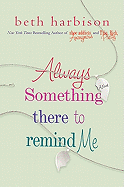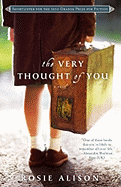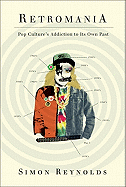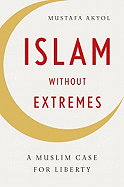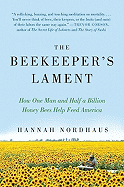You Know It Don't Come Easy
Yesterday we all got some sad news: Borders Group will be sold to a liquidation group. All of its stores are closing, and 10,700 employees will be out of work.
There are so many things that could be said. After I wrote this editorial two weeks ago, I received more than a dozen considered responses. There were many things wrong at Borders. There are many things wrong with bookselling, with publishing, with the economy.
 But today, we come not to bury a troubled company that has already made a difficult announcement. We come to praise its booksellers. For, despite any mistakes made at any level, from floor to corporate, at the height of its powers Borders offered the kind of handselling expertise that readers crave.
But today, we come not to bury a troubled company that has already made a difficult announcement. We come to praise its booksellers. For, despite any mistakes made at any level, from floor to corporate, at the height of its powers Borders offered the kind of handselling expertise that readers crave.
Each of the 11,000 people out looking for work has to consider this personally, so I will, too:
Goodbye to the first Borders store I visited back in the late 1980s. I marveled at a store that combined everything I wanted: a plethora of shelves, amazing magazine racks and a clean, well-lighted café.
Goodbye to Borders employees who helped me find books over the years for my two daughters, cheerfully checking "in the back" and allowing us (along with legions of others) to sit in their kids' sections for hours at a time.
Goodbye to the amazing store that had amazing events, like the Lyle Lovett concert that my husband and I attended for free, the Alexander McCall Smith reading and so many others I cannot list.
Goodbye to the Borders stores around the country that we visited as a family, always knowing that there would be a congenial, welcoming staff who would allow us to roam separately, then come back together at the checkout line, eagerly sharing our "finds" with each other.
It isn't a simple time for bookselling, but today? I'm thinking about the booksellers, who didn't ask for much except our trust. Others are, too; check out this Twitter hashtag: #ThankUBorders. --Bethanne Patrick


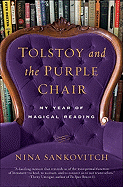 This week's Starred Review is of Tolstoy and the Purple Chair: My Year of Magical Reading by Nina Sankovitch. Sankovitch, grieving her sister's untimely death, decided to slow down and read one book a day every day for a year (she blogged her experience at ReadAllDay.org). The book could have come off as yet another "year of..." stunt memoir, but instead, it's a beautifully paced look at how mindfulness can affect the psyche.
This week's Starred Review is of Tolstoy and the Purple Chair: My Year of Magical Reading by Nina Sankovitch. Sankovitch, grieving her sister's untimely death, decided to slow down and read one book a day every day for a year (she blogged her experience at ReadAllDay.org). The book could have come off as yet another "year of..." stunt memoir, but instead, it's a beautifully paced look at how mindfulness can affect the psyche.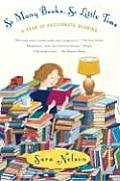 Another book about a year of reading: Try So Many Books, So Little Time: A Year of Passionate Reading by Sara Nelson. Nelson, currently the books dditor of O Magazine, decided in 2003 to read one book each week and see how it connected with her personal life. She didn't always manage to stick to her planned "curriculum"; the results surprised her, and may surprise you as well.
Another book about a year of reading: Try So Many Books, So Little Time: A Year of Passionate Reading by Sara Nelson. Nelson, currently the books dditor of O Magazine, decided in 2003 to read one book each week and see how it connected with her personal life. She didn't always manage to stick to her planned "curriculum"; the results surprised her, and may surprise you as well.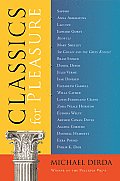 Another book about titles you should consider: Michael Dirda's Classics for Pleasure is the reading list of your dreams from your dream literary professor. Dirda has a Ph.D. but has spent most of his academic capital writing literary criticism and book reviews rather than footnote-studded monographs. A win for readers, who will find the titles considered here far from the madding, ordinary ones.
Another book about titles you should consider: Michael Dirda's Classics for Pleasure is the reading list of your dreams from your dream literary professor. Dirda has a Ph.D. but has spent most of his academic capital writing literary criticism and book reviews rather than footnote-studded monographs. A win for readers, who will find the titles considered here far from the madding, ordinary ones.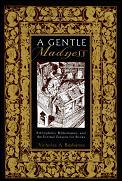 A book about loving books: Nicholas Basbanes's A Gentle Madness: Bibliophiles, Bibliomanes, and the Eternal Passion for Books may not make you a bibliophile or--gasp!--a bibliomane, but at least it may help you to understand the authors and others who would, like Erasmus, buy books, then, if there's any money left over, spring for some food. It also makes a great gift for the bibliomane in your own life.
A book about loving books: Nicholas Basbanes's A Gentle Madness: Bibliophiles, Bibliomanes, and the Eternal Passion for Books may not make you a bibliophile or--gasp!--a bibliomane, but at least it may help you to understand the authors and others who would, like Erasmus, buy books, then, if there's any money left over, spring for some food. It also makes a great gift for the bibliomane in your own life. Borders Group is going out of business. Finally. Fully. There is no last-minute white knight to save what's left of the second-largest book retailer in the country.
Borders Group is going out of business. Finally. Fully. There is no last-minute white knight to save what's left of the second-largest book retailer in the country.
 You may be a teetotaler, but
You may be a teetotaler, but  In a coproduction with Latino Public Broadcasting, tonight PBS is airing
In a coproduction with Latino Public Broadcasting, tonight PBS is airing 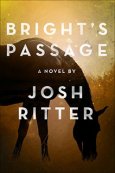 Book trailer of the day:
Book trailer of the day: 
